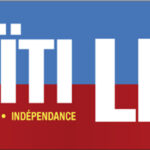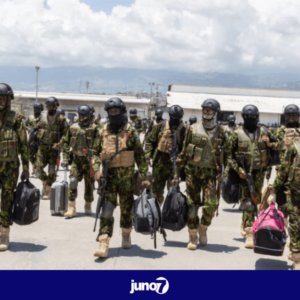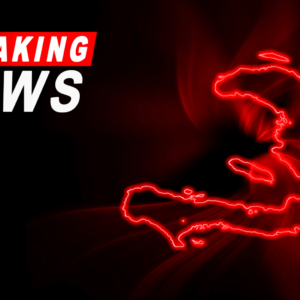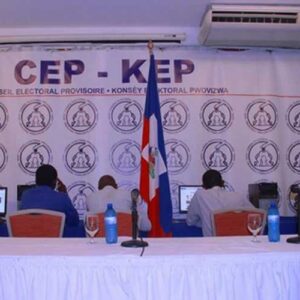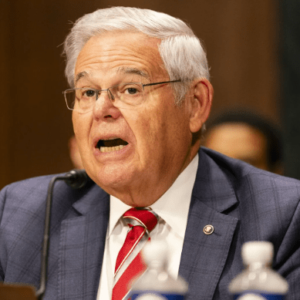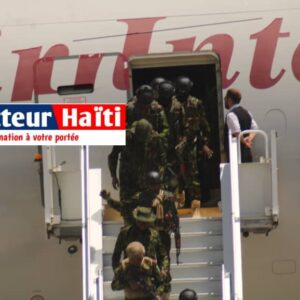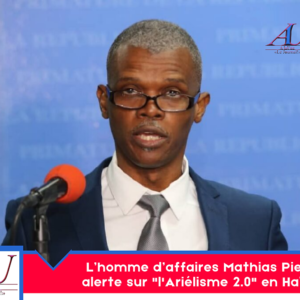The United States is behind the multinational military invasion and occupation of Haiti. How did we get here?
While all eyes are on the genocide in Gaza, Haiti is undergoing a full-scale foreign military invasion. As of May 16, thirty large transport planes have landed at Toussaint Louverture International Airport, unloading 835 tons of cargo and military equipment and transporting military personnel and contractors. At least a hundred additional planes, some owned by the US Air Force, others leased by the US State Department, are expected to arrive in the coming days. Certain sections of the Haitian capital, Port-au-Prince, are “now the outpost of an international military contingent”. The Pentagon awards lucrative contracts to American companies to supply equipment and services to support the military occupation. The head of the United States Southern Command (SOUTHCOM), in her typical patronizing and racist language, has already announced that her soldiers will take control of Haiti’s ports. On Twitter, US State Department reporter/stenographer Jacqueline Charles posted a video of herself walking freely through the empty Toussaint Louverture Airport with a contingent of US military and State Department officials. It was as if Haiti already belonged to them.
And that may already be the case. Poor Haitians have already begun to suffer the consequences of this new invasion. For example, this buildup of U.S. military equipment and foreign personnel in the country – this slow foreign invasion – is accompanied by the destruction of 350 to 400 homes of some of the poorest people in the capital, Port-au-Prince. because they are too close to the airport. Presumably, the United States insists that the destruction of property and the displacement of poor Haitians is necessary to “secure” the airport. The goal is to destroy 90 more multi-story buildings, displacing more and more poor people.
While the scale of the invasion of Haiti is breathtaking, the sense of its inevitability is disappointing. The media, including Jacqueline Charles, present it as a fait accompli, erasing from the archives the recent history of imperial interference and the crisis that brought Haiti to this point, while conveniently forgetting the “chaos” and the “anarchy” fabricated to justify intervention in the first place. Just a few weeks ago, let us remember, the Toussaint Louverture international airport would have been closed due to the “ gang violence.” Even though this talk of “gang violence” is now eclipsed by the Western celebration of the imminent invasion, it has contributed to the creation of a consensus around an old, coherent and racist cliché: the Haitian people cannot govern itself and does not deserve sovereignty. This is perhaps the only thing that can explain how the world so readily accepted the US invasion of Haiti under the blackface charade of a contingent of irresponsible black mercenaries from Africa and the Caribbean. How did we get here?
Foreign invasion, occupation and creation of a “failed state”
As I have argued elsewhere, Haiti officially lost its nominal sovereignty in late February 2004 following a coup d’état led by the United States, France, and Canada. The coup was then cleaned up by the United Nations, which, under the leadership of permanent members of the UN Security Council, the United States and France, voted to send a “maintenance” mission. of Peace” in Haiti under a “Chapter 7” mandate that allowed foreign soldiers to use their forces fully against the population. The UN occupation under MINUSTAH was marked by its brutality towards the Haitian people. Civilians were attacked and murdered. “Peacekeepers” have committed countless sex crimes. UN soldiers also dumped human feces into rivers used for drinking water, sparking a cholera epidemic that killed between 10,000 and 40,000 people. The United States and MINUSTAH also trained and militarized Haiti’s police and security forces, often rehabilitating and reintegrating rogue members. For the Haitian people, the occupation has meant nothing but death, misery, environmental degradation and an affront to our human dignity. The UN has never been held responsible for these crimes against the Haitian people.
The 2004 occupation was solidified through the creation and operationalization of the Core Group, Haiti’s current colonial rulers. Some claim that this occupation officially ended in 2017 with the official withdrawal of the MINUSTAH mission. However, the UN remained in Haiti through a new office with a new acronym: BINUH, the United Nations Integrated Office in Haiti. Through the Core Group and BINUH, Haiti is currently led by a group of non-Haitian foreigners. These are the same people who are responsible for the destruction of Haitian democracy.
Under this 20-year foreign occupation, the State of Haiti has been completely destroyed. The installation by the United States of Michel Martelly (and his “Parti Haitien Tèt Kale” (PHTK) as president of the country in 2011 was another blow to Haitian sovereignty. Martelly had lost the first round of elections and all members of the Haitian electoral council refused to formally ratify the vote. While Barack Obama’s Secretary of State, Hilary Clinton, traveled to Haiti to oversee the election results, the Organization of American States (OAS) , a member of the Central Group, was also colluding in this blatant attack on Haitian democracy.
Of course, democratic elections under military occupation are impossible. It is since the Martelly/PHTK installation that we see the total loss of even the veneer of Haitian “democracy” that the United States and the West were trying to present to the world. Martelly’s tenure was marked by deep corruption and violence (including the arming of groups to terrorize poor neighborhoods and the theft of billions of dollars from PetroCaribe funds), the attempted sale of Haitian land and resources to foreigners and, above all, the disruption of the electoral cycle in Haiti. At the time of the assassination of his successor (and protégé), Jovenel Moise (who also came to power through undemocratic “elections”), there had been no regional and local elections in Haiti since 2016 At the end of their mandate, both Martelly and Moïse ruled by decree. Once the Core Group installed Ariel Henry as Haiti’s de facto Prime Minister in July 2021, discussions about elections were put on the back burner. The United States and the Core Group did not encourage Henry, their Haitian puppet government, to hold elections, preferring to keep him in power as long as possible. At the end of 2023, the mandates of the last Haitian elected officials had expired. Haiti currently has no elected officials or legitimate government.
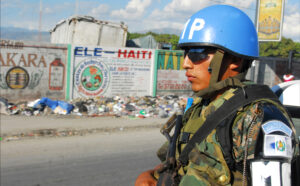
This is an important point. All international negotiations and agreements undertaken by an illegitimate puppet government are, by definition, illegitimate. This includes the demand for a military invasion of Haiti, ostensibly made by the puppet government of Ariel Henry, but in reality demanded by the United States and the Core Group. To put this in the clearest possible terms, the current military invasion and occupation of Haiti is illegal and illegitimate.
“A robust use of force” or the multinational security support mission
On October 2, 2023, the United Nations Security Council (UNSC) passed a resolution in favor of a multinational security support mission (MSS) authorizing the deployment of a foreign military and police intervention in Haiti. Although the vote did not receive unanimous approval due to the abstention of two permanent members of the UNSC (Russia and China), 13 other permanent and non-permanent members voted in favor, including 3 countries African countries (Gabon, Ghana and Mozambique). Yet the US administration, the mainstream media, as well as figures such as Linda Thomas-Greenfield, US representative to the UN, hailed the vote as a victory. Indeed, although it received the blessing of the UN Security Council, this “security support mission” is not an official UN mission. This is why, rather than being funded by the UN, as UN “peacekeeping” forces are, the mission will be primarily funded by the United States and other voluntary countries. So far, Canada and France have provided some funding (with Canada absurdly offering $8 million for Kenyan forces to “learn French” – a language not spoken by the majority Haitians). The United States also managed to convince the Bahamas, Bangladesh, Barbados, Belize, Benin, Chad and Jamaica to participate. It is obvious and telling that no white nation officially sends troops for this mission.
What is most significant about this MSS is that the resolution (UNSC Resolution 2699) was adopted under Chapter 7 of the UN Charter, a rare call as a deployment under Chapter 7 is usually intended for a country at war and allows the use of deadly weapons against the population. We must pause here to ask why the UN Security Council would authorize a Chapter 7 deployment – authorizing such use of force – for an explicitly non-UN mission. Indeed, Brian Concannon of the Institute for Justice and Democracy in Haiti argued that:
…although the Security Council approved the mission last October, he did not want to be associated with it. The authorizing resolution insisted that the mission was not an official UN mission, that the organization should take responsibility for it because it would have to resort to “too brutal a use of force” against the Haitians. .
In effect, Haiti has a foreign invasion force that is free to use “robust” force on the population without any accountability. We can only emphasize how violent the UN “peacekeeping” mission from 2004 to 2017 was, even though the troops were supposed to be accountable to the UN. Responsibility is not clearly established for this new invasion and military occupation. And as we know, it will be poor Haitians who will bear the brunt of brutal and inexplicable violence perpetrated by armed foreigners paid by the United States and sanctioned by the UN.
The call for new intervention is not new. The United States had been pushing since 2021 for a strengthening of the military presence in Haiti in order to protect the puppet government of the unelected and unpopular Ariel Henry. Over the past three years, they have secured – and received – the support of UN Secretary-General Antonio. Guterres, the Mexican Man uel Lopez Obrador (or AMLO), the darling of the American left who served as “co-drafter” with the United States to draft the intervention resolution, and Brazil’s Lula Da Silva, who pushed for a ” rapid response” (i.e. a foreign military invasion) in Haiti. The United States is not willing to put its own troops on the ground. Instead, it turned first to Canada, then to Brazil, then to the countries of the Community of Latin American and Caribbean States (CELAC) and the Caribbean (CARICOM), which were all reluctant to lead the mission, even though they supported the call for military intervention. .
The Kenyan government, however, jumped at the opportunity to “lead” the intervention with 1,000 police officers. On the eve of their police’s participation in the US invasion of Haiti, some argued that this was an expression of Kenya’s pan-Africanism. To this, the Haiti-Americas team of the Black Alliance for Peace responded: “An occupation of Haiti by an African country is not pan-Africanism, but Western imperialism with a black face. »
Kenya, we now learn, was bought with national security assistance promised by the Pentagon (which included a visit from U.S. Defense Secretary Lloyd Austin), increased IMF funding , $300 million for its soldiers and, most blatantly, the promise of an American state visit. This coveted state visit (proudly touted by Kenyan neocolonial officials as the first by an African head of state since 2008) is scheduled to take place on May 23 and must coincide, according to officials, with the physical presence of Kenyan forces in Haiti.
It is curious that as we see US military planes and personnel landing in Haiti, as the director of SOUTHCOM brags about flying supplies to Haiti and his forces take over Haiti’s ports, the Western media continue to characterize this American military invasion as an American military invasion. “UN mission led by Kenya. » The idea that this is a “Kenya-led” security mission in Haiti is just as dubious as the idea that it is a “UN mission.” What is also questionable is the celebration – in the Western media and in mainstream Caribbean political circles – of the “independence” and “benevolence” of CARICOM leaders in their dealings with Haiti.
CARICOM and the Haitian Transitional Council
One reason the brutal UN military occupation of Haiti, which began in 2004, went unnoticed is that the country was populated by a multinational, multiracial military and civilian force. The United States has admitted this, as the Wikileaks files reveal. Former U.S. Ambassador to Haiti Janet Sanderson hailed the occupation force (MINUSTAH) as a cheap source of U.S. power in Haiti because it was made up of a multinational coalition of Western and non-Western forces , including countries from Benin to Kenya to Brazil to Ecuador, all of which appear determined to use Haiti as a training ground. From the beginning, the United States sought assistance from other “regional partners” for its planned invasion of Haiti. Once rejected by Brazil, Canada and Mexico, she turned her attention to CARICOM leaders.
In early 2023, despite pressure from the United States and Canada, CARICOM, under the leadership of Bahamas Prime Minister Philip Davis, refused to agree to send police and military forces to invade Haiti. But in the summer of 2023, CARICOM leaders reversed course, bowing to pressure from the United States and its cronies, including UN Secretary-General António Guterres and members of the core group.
Ironically, this about-face occurred during the CARICOM Heads of Government Conference in July 2023, which also marked the 50th anniversary of the organization. The meeting was attended by US officials, including Vice President Kamala Harris, Secretary of State Anthony Blinken and, among others, African-American Congressman Hakeem Jeffries. The previous month, in June, Canadian Foreign Affairs Minister Mélanie Joly hosted a meeting on Haiti today with Caribbean countries and various UN ministerial agencies with key partners to discuss the security situation in Haiti . Thus, at the end of the CARICOM conference, member states issued a statement in support of the US-orchestrated military invasion of Haiti. Like Kenya, CARICOM countries were promised robust security aid and assistance programs for their service to the empire (see Kevin Edmonds’ timeline demonstrating how “CARICOM plays a role of leading role in legitimizing foreign intervention in Haiti, literally selling out Haiti for increased funding and improving political fortunes.
By spring 2024, CARICOM leaders would become the strongest advocates of MSS in Haiti. CARICOM was thrust into the spotlight once Ariel Henry was prevented by Haitian armed groups from landing in Haiti after a US-sponsored trip to Kenya to sign an agreement on the deployment of the Kenyan police (an agreement mandated by the Kenyan courts after receiving a challenge to the constitutionality of sending Kenyan police to Haiti). Instead of a Haitian government (since, as we recall, the US did not force its puppet to hold elections), the US got help (or cover) from CARICOM to concoct a new “government” for Haiti.
Western media reported to us that on March 11, “CARICOM-led” discussions took place with Haitian leaders. In reality, however, CARICOM member states worked under the supervision of the Core Group. The United States chose which Haitian leaders to invite to the discussion, and the select group – United States, France, Canada, Brazil and Mexico – first met privately to develop a plan for Haiti, before making call for selected Haitian representation. Most importantly, Haitians chosen to be part of the negotiations on a new Haitian government had to agree to American conditions for foreign intervention before being allowed to participate in the discussion! Indeed, the Prime Minister of Barbados, Mia Mottley, another darling of the American left, working alongside Guyanese President Irfan Ali, insisted that the meetings could not begin without Haitian support for this military invasion. foreign.
It was during these meetings that the imagined “solution” consisted of a “Presidential Transitional Council”, a 9-member council made up of representatives from politics, the private sector, civil society and faith-based “stakeholders”. Haitian women to exercise the functions of president of the State. Haiti until elections are held in 2026. Representatives include members of all former political classes, including Martelly’s party, PHTK and former President Aristide’s Fanmi Lavalas. It must be reiterated that the members of this Council were hand-picked by the United States and all had to agree to support the foreign invasion (and, ultimately, the occupation). This is what is being touted as the “Haitian-led solution” so often touted by U.S. officials, Core Group occupiers, and Western media. In this sense, the Presidential Council cannot be considered legitimate, nor be used to speak of Haiti as sovereign.
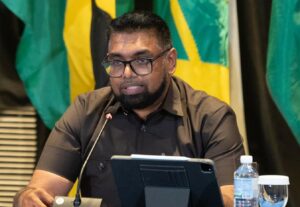
Indeed, one of the Council’s first major acts was to write to the Kenyan government requesting the invasion. On May 16, members of the Transitional Council met with the country’s resident occupier, Maria Isabel Salvador, head of the United Nations Integrated Office in Haiti (BINUH), an office whose existence demonstrates Haiti’s lack of sovereignty . If further proof was needed, Jake Johnston, an analyst at the Center for Economic Policy and Research, tweeted on May 10: “I asked a source close to the presidential council if there had been any communications about these planes from the United States. The answer: no. »
On May 20, UN News published an article on Haiti titled “Haiti: multinational mission and the “inexorable demand to restore security conditions.” In this article, we are told that the foreign invasion of Haiti by the MSS is necessary because of “activities of well-established criminal gangs.” BINUH leader Salvador sounded the alarm: “it is impossible to exaggerate the increase in gang activity in Port-au-Prince and beyond.” Salvador then asserts that the “gang” attacks “have further weakened state institutions and worsened already critical challenges to the restoration of the rule of law.” We must put aside, for a moment, the stunning irony of Salvador, a native of Ecuador, who speaks as if his country were not one of the most notorious for gang violence, gang violence that is has taken over the entire country, not just the capital. . What is interesting here, however, is the suggestion that it is “gang violence” in Haiti that is the cause of the “weakening of state institutions.”
Who are the real gangsters in Haiti?
In September 2022, a group of Haitian grassroots activists wrote an open letter to UN Secretary-General António Guterres to denounce his characterization of popular protests as “gang” violence:
Contrary to your assertions, these popular protests are part of a struggle for a Haiti free from stifling foreign interference, from gangsterization, from this extreme manufactured poverty and from an anti-national, illegitimate and criminal political regime established by the Core Group of which the UN is a member. This puppet political regime, operating under the dictation of the International Monetary Fund (IMF), has just stabbed the people with the decision to increase the price of petroleum products by more than one hundred percent (128%)…
The letter not only castigated Guterres for his support of IMF demands that the Haitian government remove fuel subsidies, but outright imposed the “gangsterization” of Haiti on the UN, Core Group and continued occupation from Haiti. He argued that the “gangs” in Haiti are “political appendages of the current de facto power [Ariel Henry]from the Core Group” and that they attempted to infiltrate the popular movements under the orders of their bosses to provide a pretext for the international community to criminalize the anti-government and anti-imperialist demonstrations underway in Haiti since 2018.
One of the most underestimated aspects of the current “crisis” in Haiti is the ongoing protests by the Haitian people against occupation and for self-determination. Hundreds of thousands of people demonstrated in 2004 after Aristide was deposed by the United States, France and Canada. They protested against the imposition of another illegitimate president, Jovenel Moïse, in 2015 and 2016. They protested against the corruption of the p political arti of Martelly and Moïse imposed by the United States, the PHTK, in 2018 and 2019. And they protested against the unelected and de facto United States. installed Prime Minister Ariel Henry, until the political elite gave armed groups the means to terrorize the populations of poor neighborhoods.
The other underestimated aspect of the so-called “gang” problem in Haiti concerns the role of oligarchs and Haitian political elites who finance these young people. Indeed, young armed men terrorizing poor neighborhoods – particularly left-wing political strongholds – are not a new phenomenon. Haitian oligarchs have always used armed groups to settle commercial and political scores and to sow havoc from which they could profit. Indeed, since the early 1990s, people like factory owner André Apaid have been denounced as sponsors of armed groups who terrorized the population. Most recently, in 2022, the Canadian government sanctioned oligarchs Gilbert Bigio – often referred to as Haiti’s richest person – Reynold Deeb and Sherif Abdallah. Many agree that “today’s gangs are largely paramilitary allies of PHTK, the U.S.-installed political party that has dominated Haiti for the past decade with a combination of fraud electoral and violence”.
But this part of the story does not fit the racist narrative that the Haitian people are inherently violent and, as such, deserve violent intervention.
We are told that the United States’ interest in Haiti is humanitarian, that the United States wants to protect the Haitian people from “criminal gangs.” Yet American weapons have flooded Haiti, and the United States has consistently rejected calls to effectively enforce the UN Security Council resolution providing for an arms embargo against Haitian and American elites who import arms into the country. country.
In fact, when we talk about “gangs,” we must recognize that the most powerful gangs in the country are subsidiaries of the United States itself: the United Nations Integrated Office (BINUH) and the Core Group, both entities colonialists who have effectively governed the country since the 2004 coup d’état. It is this gang, the Core Group, its acolytes (CARICOM) and its puppets installed in Haiti who insist on this violent solution to the crisis in the country – a crisis that they themselves helped create.
So why Haiti?
The United States must maintain its control over Haiti because the country is of strategic importance to its geopolitical objectives – the increased militarization of the Caribbean region and Latin America in preparation for its confrontation with China and the establishment implementation of the Global Fragility Act. Indeed, an examination of the actions of the United States and the so-called “international community” in Haiti from 2004 to the present demonstrates how Haiti has served as a testing ground – a laboratory – for much of what is encapsulated in global fragility. Law (GFA). In other words, the GFA is not so much a new policy as a formal expression of de facto U.S. policy toward Haiti and the Haitian people – at least over the past two decades. In other words, the destabilization of Haiti is callously calculated.
But for the Western imperial powers to mask their own responsibility in the face of the violence, precariousness, misery, unemployment and poverty that they have helped to create and structure within the population, they indulge in to their favorite sport: fostering a political crisis so that they can arrive messianically to play the role of savior.
There are several reasons for this. One of the consequences of the interference of Western powers in Haiti, or at least of the domination of the international community (represented only by the United States, France and Canada, of course) or of aid policies development of Western governments, is to generate a tailor-made policy. A process of dependence based on the exploitation and oppression of populations which ultimately only benefits capitalist interests. It is therefore important to understand the role of the United States in the complete dismantling of the Haitian state, not just as a secondary event, but as a set of calculated and specific strategies.
Why Haiti?
First there is the question of the Haitian revolution. Haiti has never been forgiven for breaking, even if only for a short time, white supremacy and destroying the system of plantation slavery that was the basis of white supremacy.
Second, UN-led (and globally enforced) military occupations have been deployed as proxy enforcement of US regional policy. This regional policy has a number of components which appear to include the destruction of the vestiges of the popular movement that emerged in Haiti after the fall of the Duvalier dictatorship, and the promotion of the interests of the “business-friendly” Haitian transnational bourgeoisie. In short, it was about promoting the neoliberal economic agenda that underpinned U.S. foreign policy in the Caribbean and Latin America. In 2011, leaked diplomatic cables between Washington and the U.S. Embassy in Port-au-Prince revealed then-U.S. Ambassador Janet Sanderson asserting that “the United Nations Stabilization Mission in Haiti is a tool essential to achieve the principal political interests of the American government in Haiti. Haiti,” which included the suppression of “resurgent populist and anti-market economy political forces.” The goal, it seems, is to open up space for the U.S. and Canadian governments, particularly to make Haitians cheap labor for multinational corporations. To achieve this, land owned by peasants must be seized and transferred to international corporations, while alienating the masses from their land.
The United States has another key objective: to use Haiti to control the Caribbean basin in preparation for its confrontation with China, as well as to control the states it considers its enemies: Venezuela, Cuba and Nicaragua. Indeed, the growing US military presence in places like Guyana and increasingly large US-led regional military exercises, such as Operation Tradewinds 24 (hosted by Barbados), reveal the true objectives of the United States. And Haiti is perfectly positioned, geographically and politically, to consolidate and expand American imperial power.
We cannot underestimate the power and tactics of American imperialism. And the crisis in Haiti – the crisis of Haiti – is a crisis of imperialism. It is in this context that we must understand the United States’ insistence on yet another invasion and military occupation of Haiti, and also understand the criminal absurdity of yet another foreign invasion and military occupation of Haiti.
The West’s multinational occupation of Haiti, which began in 2004 and continues, must be considered what Peter Hallward has called “the most successful exercise in neo-imperial sabotage.” The United States, France, and Canada have successfully removed a democratically elected and popular president, circumvented the country’s constitution, and, over the past twenty years, installed prime ministers and presidents, all while overseeing the dismantling complete body of the Haitian state. And now we must believe that the crisis in Haiti is linked to “gangs” and that violence against the Haitian people and their sovereignty is the only possible solution.
We must reject this call for violence and remember that it is the history of Haiti, scene of one of the world’s longest struggles for black liberation and anti-colonial independence, that explains the reactionary assault constant of the American empire against its people. As Haiti faces yet another American invasion and occupation, we would do well to remember the words of Haitian statesman Dantès Bellegarde describing the first American occupation in 1915 – in the hope that they will serve call to action:
The American imperialists, taking advantage of the temporary unrest, entered Haiti. They destroyed all the liberal institutions of the country, all the achievements already made on the path to democracy; they replaced the “black satrapy” with a white dictatorship, but with this disadvantage, namely that the Haitians could revolt against the black satrapy and overthrow it, while they can do nothing against the white dictatorship so strongly supported by the Marine Corps bayonets. , the bombs of American army aviators and the cannons of American cruisers… The American action is that Haiti is bankrupt.”
The occupation continues. But so does our fight for Haitian sovereignty!
*Jemima Pierre is editor and contributor to the Black Agenda Report, Haiti/Americas co-coordinator of the Black Alliance for Peace, and professor of black studies and anthropology at UCLA.
Black Agenda Report (BAR) 22 mai 2024



